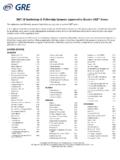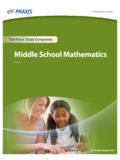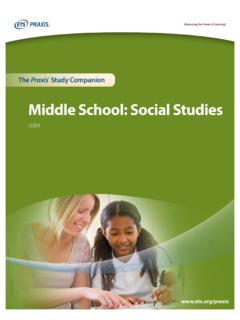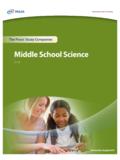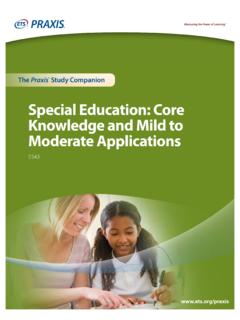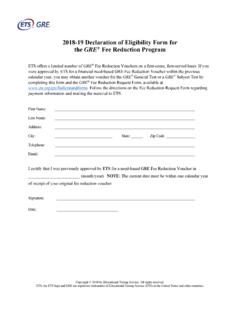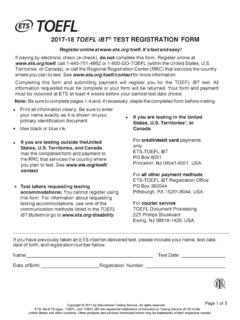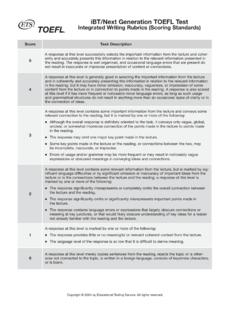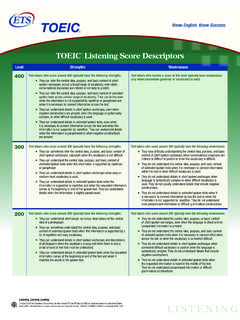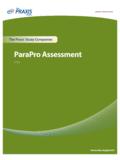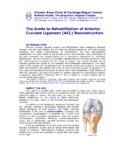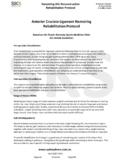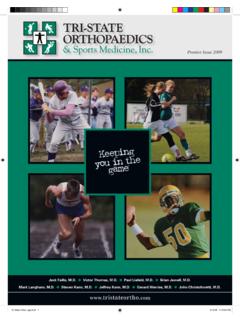Transcription of ICT Literacy Assessment - ETS Home
1 Literacy AssessmentAn Issue Paper from ETS IntroductionDespite broad consensus on the need for information and communications technology Literacy among college students, until recently there has been a relative dearth of research-based data to isolate exactly what proficiency gaps exist, or what measures to take to ensure that students enter college and the economy prepared for the complexities of an information-driven society. We will surely one day succeed in closing the digital divide that separates the technology haves from the have-nots.
2 But we will not succeed by merely providing access to equipment; we must also provide the intellectual tools to use technology effectively, in school and in the is exactly what ETS is doing with a new ICT Literacy large-scale Assessment . The ETS ICT Literacy Assessment is designed to measure proficiency in digital information management necessary for a modern academic and economic environment. Given the remarkable extent to which technology has transformed our individual lives and contemporary life in general, and the inexorable pace of technological change, it is essential that we ensure that students are equipped to ICT Literacy Assessment is the product of collaboration among ETS and seven leading North American college and university systems, which in 2003 organized the National Higher Education ICT Initiative.
3 In creating the ETS ICT Literacy Assessment , this consortium, as it is known, was guided by the work of the International ICT Literacy Panel, a multinational group of experts from education, government, nongovernmental organizations, labor and the private convened the Literacy panel in 2001. Within a year it released a report titled Digital Transformation: A Framework for ICT Literacy , available at The report set forth a comprehensive analysis of what wasknown and not know about ICT Literacy , and offered recommendations for research and policy.
4 The work of the International ICT Literacy Panel and the National Higher Education ICT Initiative led to the development of the ETS ICT Literacy Assessment , which in June 2005 will provide colleges and universities with the measurement basis they need to evaluate their existing approaches to ICT the ICT Literacy AssessmentThe ICT Literacy Assessment is as innovative as communications technology itself. Unique among Literacy assessments, it is simulation-based and measures multiple aspects of ICT proficiency. Rather than pose multiple-choice questions, it requires test takers to use basic technology as a tool to arrive at solutions.
5 In that way, the test demands that students use technology to perform information management tasks, such as extracting specific information from a database, developing a spreadsheet, or composing an e-mail summarizing certain research useful as the test will be in helping institutions of higher education and employers gauge ICT proficiency, it will also be useful in helping to develop strategies for closing the gap between those who possess essential ICT skills and those who do not. The ETS ICT Literacy Assessment is especially valuable for measuring group performance, including entry-level students at two-year and four-year schools; rising juniors; students seeking to enter majors that require ICT proficiency; students transferring from community colleges to four-year schools; students leaving community colleges for the workplace; and displaced workers seeking to verify ICT skills required to rejoin the of the Assessment development process included pre-launch field testing.
6 ETS also conducted beta testing at colleges and universities to ensure that each task is conceptually and statistically valid. ETS will also conduct ongoing research to examine the performance data, ensuring the test instruments meet the highest standards of validity, reliability, quality and s Goals ETS has identified two of the most salient objectives the test has been designed to achieve: provide aggregated results for measuring the performance of particular groups, beginning with test administration in January 2005, and followed by aggregate score reports beginning in June 2005 provide individual results that can be used to measure the basic ICT proficiency of a student or potential employee, beginning in 2006 Measuring Group ProficiencyBy collecting aggregated test results of a student body or subgroup.
7 Higher education administrators and faculty can determine and describe the ICT strengths and weaknesses of the entire student body, or of subgroups defined by such attributes as language, race, class year and academic from such an Assessment can serve as placement or remediation indicators by helping an institution learn whether a particular group of students has basic ICT proficiency, what percentage can perform certain types of ICT tasks, and how institutional resources should be directed for basic ICT instruction.
8 It is also a measure of institutional performance in that it reflects how well classes compare against one another, concurrently or over time. Test results also provide schools with the information they need to design or adjust curricula and inform the budgeting Individual ProficiencyAssessing an individual s proficiency in ICT will help determine whether a person would benefit from basic ICT instruction to be prepared, for example, for a certain major; for upper division instruction; to transfer from a community college to a four-year institution; or for a job in a desired field.
9 Results will show whether a person needs basic ICT instruction, or is properly prepared to enroll in a technology-rich course or academic program. The Assessment also indicates to prospective employers whether a potential applicant is prepared for the rigors of the the ICT Literacy Assessment WorksUnlike a traditional test, which uses discrete, artificial tasks to evaluate performance, the ICT test simulates real-life demands of computer users, targeting specific skills of someone who is ICT literate. Equipped with a PC, and paper and pencil for notes, test takers are called on to respond to 16 tasks over the course of the two-hour test.
10 Each of the first 13 tasks is designed to be completed in four minutes. Two 15-minute tasks and one 30-minute task creating this test, ETS built simulations of authentic technology environments in which critical-thinking skills must be used to perform tasks. One example is an Internet-like database, which test takers are asked to explore to find very specific information. Like the Internet, the database contains misleading, superficial and superfluous information. The test taker s challenge is to use technology appropriately and effectively, avoid being sidetracked, and arrive at the correct results.
